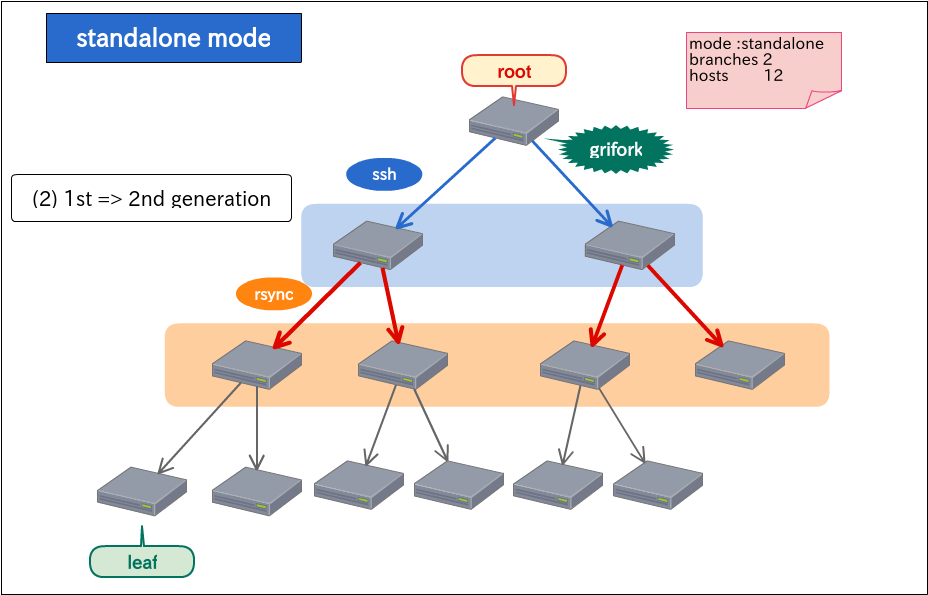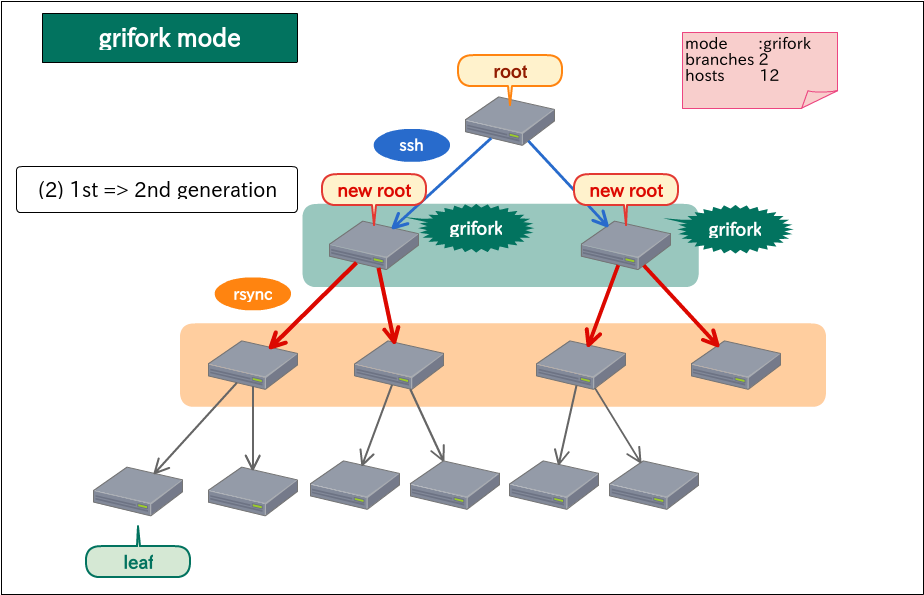Ecosyste.ms: Awesome
An open API service indexing awesome lists of open source software.
https://github.com/progrhyme/grifork
Fast Propagative Task Runner
https://github.com/progrhyme/grifork
deployment task-runner
Last synced: about 2 months ago
JSON representation
Fast Propagative Task Runner
- Host: GitHub
- URL: https://github.com/progrhyme/grifork
- Owner: progrhyme
- License: mit
- Created: 2016-09-22T15:55:06.000Z (over 8 years ago)
- Default Branch: master
- Last Pushed: 2016-10-10T05:29:11.000Z (about 8 years ago)
- Last Synced: 2024-10-18T03:08:55.533Z (2 months ago)
- Topics: deployment, task-runner
- Language: Ruby
- Homepage: http://www.rubydoc.info/gems/grifork
- Size: 739 KB
- Stars: 2
- Watchers: 2
- Forks: 0
- Open Issues: 0
-
Metadata Files:
- Readme: README.md
- Changelog: CHANGELOG.md
- License: LICENSE
Awesome Lists containing this project
README
[](https://badge.fury.io/rb/grifork)
[](https://travis-ci.org/key-amb/grifork)
# grifork
Fast propagative task runner for systems which consist of a lot of servers.
# Concept
**Grifork** runs defined tasks on the system in a way like tree's branching.
Give **grifork** a list of hosts, then it creates a tree graph internally, and runs
tasks in a top-down way.
**Grifork** has two modes to work:
1. **Standalone** mode. This requires **grifork** program only on the root server
in the tree graph: i.e. the server which invokes tasks.
1. **Grifork** mode. On the other hand, this requires **grifork** program to work
on every node in the graph.
Take a look at each mechanism.
## Standalone Mode
The image below illustrates a 3-depth tree of 13 nodes including root node.

We are running a task to copy a file tree to every host.
1st stage is completed: to copy them to nodes in 1st generation.
Now at 2nd stage, root node logins each of its children by _ssh_ and kicks _rsync_
program there, in order to copy the file tree from 1st to 2nd generation.
NOTE:
- Max concurrency of running task in **standalone** mode is the number of nodes
at the generation which holds max.
This is the last genaration or the genartion before the last.
## Grifork Mode
The image below is similar to previous situation except that this is in **grifork** mode.

In this mode, parent nodes in the graph invokes _grifork_ command on every child
node via _ssh_, giving the graph tree which descends from each child node.
# System Requirements
- Ruby v2
- ssh, rsync
# Installation
```sh
git clone https://github.com/key-amb/grifork.git
cd grifork
bundle
```
# Usage
```sh
edit Griforkfile
./bin/grifork [--[f]ile path/to/Griforkfile] [-n|--dry-run]
```
## Griforkfile
**Griforkfile** is DSL file for _grifork_ which configures and defines the tasks
to be executed by _grifork_.
Here is a small example:
```ruby
branches 4
log file: 'grifork.log'
hosts ['web1.internal', 'web2.internal', 'db1.internal', 'db2.internal', ...]
local do
rsync '/path/to/myapp/'
end
remote do
rsync_remote '/path/to/myapp/'
end
```
If you run `grifork` with this _Griforkfile_, it just syncs `/path/to/myapp/` in
localhost to target `hosts` by `rsync` command.
See [example](https://github.com/key-amb/grifork/tree/master/example) directory for more examples of _Griforkfile_.
And refer to [Grifork::DSL](http://www.rubydoc.info/gems/grifork/Grifork/DSL) as API document of _Griforkfile_.
# Authors
IKEDA Kiyoshi
# License
The MIT License (MIT)
Copyright (c) 2016 IKEDA Kiyoshi